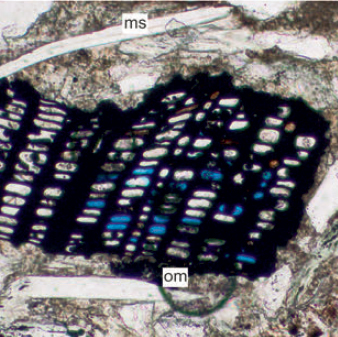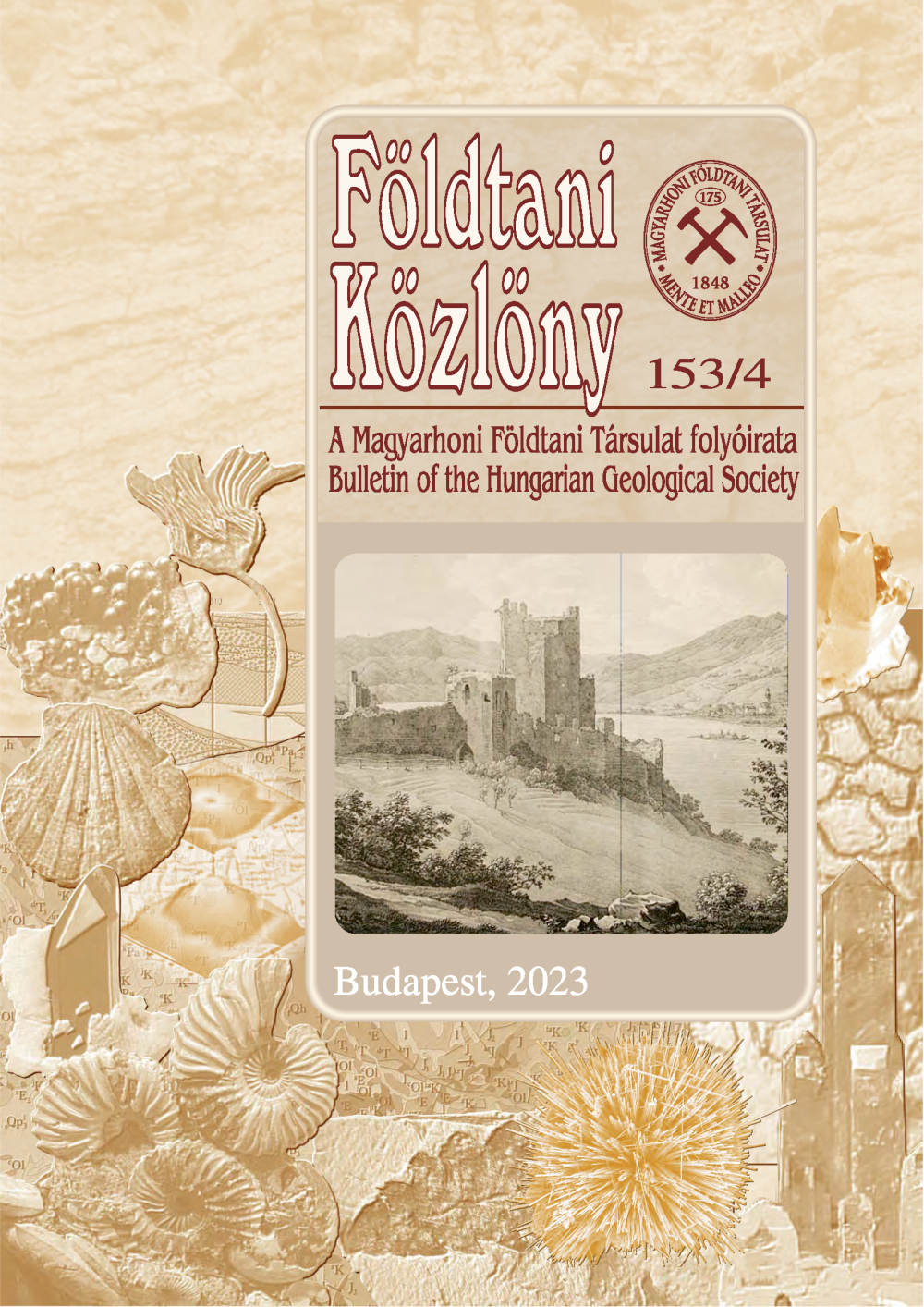Petrography and palynology of the Endrőd Formation, Hódmezővásárhely–I well, Makó Trough (Pannonian Basin, SE Hungary): palaeoenvironmental and diagenetic consequences
Abstract
This paper presents the results of a mineralogical, petrographic and palynological study of selected Pannonian calcareous marl and sandstone samples penetrated by the Hódmezővásárhely–I (Hód–I) well, Endrőd Formation (Tótkomlós Member, cores 35 and 40, 5167.0–5183.0 m and 5468.0–5486.0 m, respectively); this formation is part of the Makó Trough of the Pannonian Basin, SE Hungary. The studied sections comprise mixed carbonate-siliciclastic rocks with abundant silt- to sand-sized angular grains such as monocrystalline and polycrystalline quartz, muscovite, biotite, chlorite, carbonate and metamorphic rock fragments. This polymictic and immature clast composition reflects the importance of local provenance, suggesting that intrabasinal structural highs represent additional source areas to the basin. Palynological analysis was carried out on selected core segments of the well in order to provide a biostratigraphic framework and palaeoenvironmental interpretation for the studied interval. In the investigated samples two biozones were distinguished: the Spiniferites bentorii oblongus Zone and the Spiniferites paradoxus Zone. The successive changes of the dinocyst assemblages reflect changes in the distance from the shoreline or the terrestrial input from the margin of the Makó Trough. The older assemblage indicates a more proximal setting in relation to the shoreline and/or a higher terrestrial input; the younger dinocyst assemblage — with a more open-water taxa point in relation to a greater distance from the shoreline — represents an increase in the water level, and/or decreased terrestrial input. The predominance of membranous dinocysts in this assemblage indicates a fluctuation in the lake surface salinity, or possibly a shift to a holoplanktonic lifestyle due to periodical oxygen depletion in the water column. The assemblages of both zones demonstrate their regional distribution throughout the whole Pannonian Basin and therefore they can be used to document regional scale trends in phytoplankton communities, as well as implying the communication of water bodies. The colour and preservation of the palynomorphs suggests significant burial heating and the high maturity of the sedimentary organic matter. In the studied samples a series of paragenetic events have been identified using petrographic methods. Early diagenesis was generally represented by cementation (i.e. of framboidal pyrite and carbonates with variable iron content) and weak mechanical compaction. On the other hand, late diagenesis involved pressure solution (chemical compaction), cementation (late pyrite) and, occasionally, dolomite replacement and mineral transformation (smectite to illite) processes. It is noteworthy that in these two core sections neither significant macroporosity nor microporosity were observed, this being due to pervasive cementation.
















